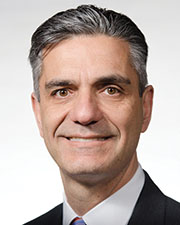
New Rochelle’s downtown is on track for a successful revitalization - by Luiz Aragon

City of New Rochelle
Investors and developers across the country are tuning in to opportunities offered by small and mid-sized cities that are modernizing their planning strategies to attract the kind of capital that will revitalize their downtowns for the long term.
A prime example is New Rochelle, NY, a city in Westchester County with a population of roughly 80,000 people situated about 25 miles north of New York City. Our novel downtown strategy has attracted national attention as a model worthy of emulation by similarly scaled cities nationwide.
Following an inclusive process of community engagement, we have begun to create a newly realized downtown that will attract new residents, stimulate business growth, promote sustainability, encourage entrepreneurialism, and deliver new cultural and recreational amenities.
After signing a master developer agreement in 2015 with RXR Realty–which had been selected on a competitive basis–New Rochelle began implementing a bold downtown redevelopment plan expecting to draw as much as $4 billion in new investment from an array of sources.
Aiming for 12 million s/f of new development overall, the program is ahead of schedule to create 6,370 new housing units, one million s/f of retail and over two million s/f of new office space all within a compact, walkable, transit-rich, mixed-use downtown district.
After devoting a year to reinventing our zoning codes, the city rezoned nearly 300 acres of downtown New Rochelle, including 12 acres of city-owned property. We discarded conventional zoning methods that had regulated development based solely on the way land would be used. Instead, we created a “Downtown Overlay Zone” model that would prioritize new construction that stood to go furthest in creating “vibrant places.”
The streamlined framework incentivizes development through an unprecedented, fast-track zoning mechanism that, together with generic environmental reviews, accelerates the development review process. Through this, developers know upfront how much it will cost them to undertake a project, and how long it will take to get the required approvals.
The new plan provides a transparent roadmap for developers and owners, while also setting design standards and community benefit requirements intended to create a thriving, attractive, and sustainable city center. A “Fair Share Mitigation Fund” further ensures that development covers public costs associated with growth.
At the same time, the strategy breaks precedent by systematically and substantially incorporating input from end-users often given short shrift by conventional planners.
Our unique “Crowdsourced Placemaking Program” has harvested grassroots input about land use and redevelopment choices, with special attention paid to ideas offered by artists and young professionals.
This in-person element was complemented by online forums soliciting across-the-board feedback on the redevelopment initiative. We leveraged such tech tools as virtual reality and augmented reality to help better engage residents in the plan-making process. Overall, we were able to consult with over a thousand residents on the future of downtown New Rochelle.
In fact, our web-based outreach garnered national recognition from the Bloomberg Philanthropies U.S. Mayors Challenge. Last fall, the competition named New Rochelle one of nine cities to win $1 million grants to showcase replicable strategies to help municipalities “uncover and test bold, inventive ideas to confront the toughest problems faced by cities today.”
Acknowledging that private developers frequently dominate urban planning, the Bloomberg philanthropy selected New Rochelle “for its innovative approach to improving citizen engagement through the use of immersive technology.”
The “placemaking” component of our plan is making New Rochelle a more exciting and desirable place to live. We now issue Requests for Proposals, for example, for small spaces that could enhance downtown’s “cool factor.” As an illustration, an RFP has been awarded two small commercial spaces at New Rochelle’s train station – one to an artisanal coffee shop, and one to a new Internet radio station.
A crucial component of our revitalization is the cultivation of New Rochelle’s artist community. To support the city’s art scene, we’ve launched a contest that will award an artist one year free rent in the City’s core, added 15 custom sculptures and a multidimensional art installation to the downtown as part of a robust public arts program, and incorporated a community art gallery and black box theater and arts education space into new downtown developments.
New Rochelle’s downtown revitalization has made major progress. Currently, we have 11 sites at different stages of construction, with a total of 23 sites approved.
Other cities can learn from our example. With hands-on guidance from the private sector, we reinvented our planning strategy to accommodate the needs of developers and investors. Yet we have also aimed to fulfill local residents’ visions for their community.
By consciously serving a full spectrum of constituencies, New Rochelle’s downtown is on track for a successful revitalization.
Luiz Aragon is commissioner of development for the city of New Rochelle, N.Y.